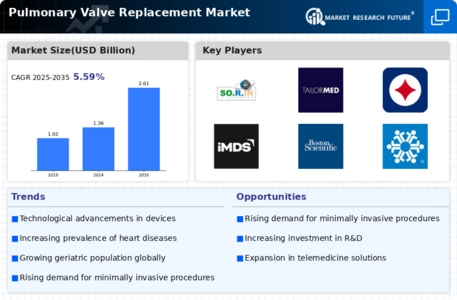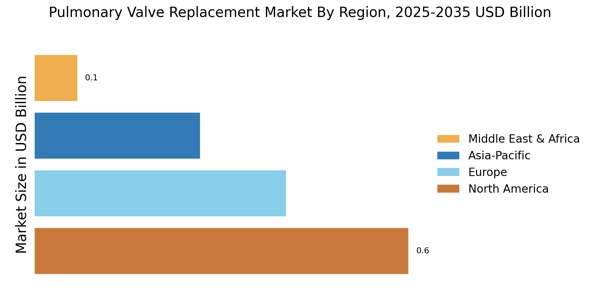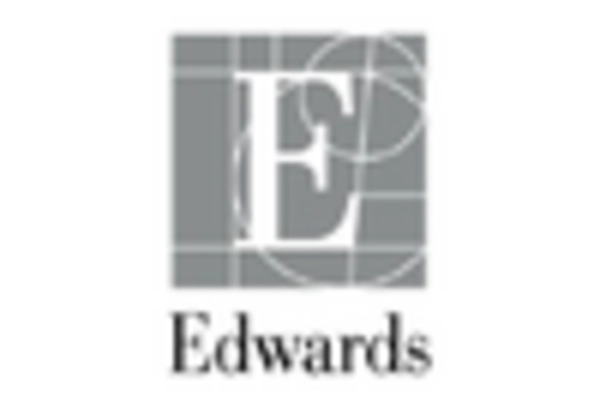Rising Healthcare Expenditure
Increased healthcare expenditure is another pivotal driver for the Pulmonary Valve Replacement Market. As countries allocate more resources to healthcare, there is a corresponding rise in the availability and accessibility of advanced medical treatments, including pulmonary valve replacements. This trend is particularly evident in regions where healthcare budgets are expanding, allowing for the adoption of innovative technologies and procedures. The market is likely to benefit from this increased investment, as more healthcare facilities are equipped to perform complex surgeries. As a result, the Pulmonary Valve Replacement Market is anticipated to flourish, supported by enhanced healthcare infrastructure.
Growing Focus on Preventive Healthcare
The growing emphasis on preventive healthcare is influencing the Pulmonary Valve Replacement Market. As healthcare systems shift towards preventive measures, there is an increased focus on early diagnosis and management of heart conditions. This proactive approach is likely to lead to higher rates of screening and monitoring for pulmonary valve disorders, resulting in earlier interventions and a greater demand for valve replacements. The market may see a rise in patient referrals for surgical options as healthcare providers prioritize preventive strategies. This trend suggests that the Pulmonary Valve Replacement Market will continue to evolve, adapting to the changing landscape of healthcare.
Technological Advancements in Valve Design
The Pulmonary Valve Replacement Market is experiencing a surge in technological advancements, particularly in valve design and materials. Innovations such as bioprosthetic valves and transcatheter techniques are enhancing patient outcomes and reducing recovery times. The introduction of minimally invasive procedures is likely to increase the adoption of pulmonary valve replacements, as they offer reduced surgical risks and shorter hospital stays. Furthermore, the market is projected to grow at a compound annual growth rate (CAGR) of approximately 8% over the next five years, driven by these advancements. As healthcare providers increasingly adopt these technologies, the Pulmonary Valve Replacement Market is poised for significant expansion.
Aging Population and Associated Health Issues
The aging population is a significant factor influencing the Pulmonary Valve Replacement Market. As individuals age, the incidence of heart-related ailments, including pulmonary valve disorders, tends to increase. By 2030, it is projected that the number of individuals aged 65 and older will reach approximately 1.5 billion, creating a larger pool of patients who may require valve replacement procedures. This demographic shift is likely to drive demand for pulmonary valve replacements, as older adults often experience a decline in cardiovascular health. Consequently, the Pulmonary Valve Replacement Market is expected to grow in response to the healthcare needs of this aging population.
Increasing Incidence of Congenital Heart Defects
The prevalence of congenital heart defects (CHDs) is a critical driver for the Pulmonary Valve Replacement Market. It is estimated that CHDs affect around 1 in 100 live births, leading to a substantial patient population requiring surgical intervention. As awareness of these conditions grows, more patients are being diagnosed and treated, thereby increasing the demand for pulmonary valve replacements. The market is expected to witness a steady rise in procedures performed, as healthcare systems prioritize early detection and intervention. This trend suggests that the Pulmonary Valve Replacement Market will continue to expand, catering to the needs of a growing patient demographic.


















Leave a Comment